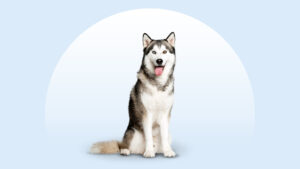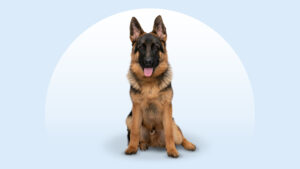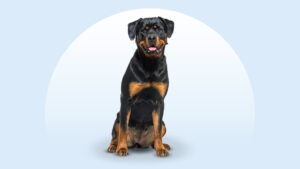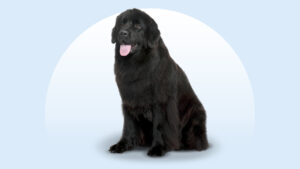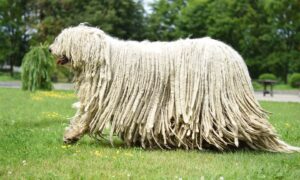Alaskan Malamute
Updated December 15, 2025
Alaskan Malamute
Updated December 15, 2025
This sporty pup might look like a wolf, but their playful, domestic side makes it clear that an Alaskan Malamute is a happy family dog delighted to be part of your social circle. Get ready for new adventures, as this bright pup loves to be on the go—and wants you along for the ride.
Adventurous, Intelligent, Spirited
75–85 pounds
23–25 inches
10–14 years
White, Gray, Black, Sable, Red
If Alaskan Malamutes could go skiing with you, they would. They want the full adventure of swishing down the slopes, pretending they’re in the Winter Olympics. But since there’s probably not a ski slope for dogs in your neighborhood, they’ll settle for other adventures where they can use their brains and brawn to have a blast.
Snow is always a plus, but in summer months Alaskan Malamutes enjoy early-morning hikes and solving puzzle toys indoors with the AC cranked.
These bright, happy dogs love to keep themselves entertained, so if you’re always thinking one step ahead, this quick-thinking canine could be your soul pup.
Alaskan Malamute Characteristics
Alaskan Malamute Appearance
Alaskan Malamutes have pointed ears and a long nose—they could pretty much be mistaken for a wolf. But any facade of a tough exterior fades away when you see their trademark smile, a good-natured grin matched by a curious look in their eyes.
Their plumed tail, which curls over their back, is one of their most impressive features.
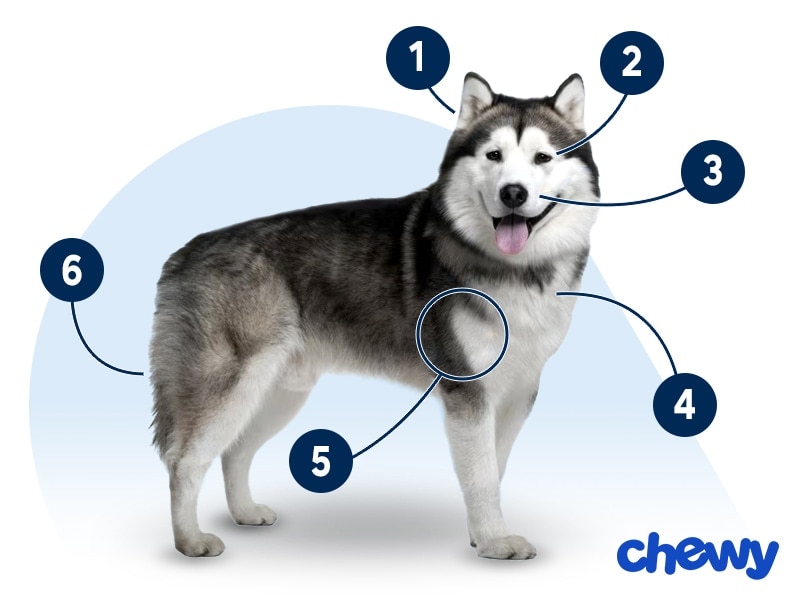
- Ears
Alaskan Malamutes have medium-sized, triangular ears with slightly round tips that point forward.
- Eyes
Alaskan Malamutes have brown, almond-shaped eyes with a curious and friendly expression.
- Nose
An Alaskan Malamute dog typically has a black nose, except for those with red and white coats, whose nose is brown.
- Coat Length
An Alaskan Malamute is double coated: the topcoat is coarse and thick, and the undercoat is oily and wooly. Their fur is shorter on the sides and longer on the back, shoulders, and legs.
- Coat Color
Alaskan Malamutes can be all white, but usually they’re a combination of white with gray, silver, black, sable, seal, blue, agouti (a gray-brown pigmentation), or red markings.
- Tail
The Alaskan Malamute has a furry tail that looks like a plume and curves over their back.
Alaskan Malamute Temperament
These good-natured pups thrive on human attention and are delighted to be part of the company you keep. With proper socialization, your Alaskan Malamute will happily welcome guests.
They don’t play favorites with family members—everyone is their BFF. Try not to take it personally: It’s not that they don’t love you, it’s just that they find everyone equally fascinating.
Alaskan Malamutes are chatty, but not in the way you might think. They’re not traditional barkers, but they will give off little yelps, howls, or adorable “woo woo” noises to let you know they have an opinion. Either way, they’re honored to be part of your social group.
Your Alaskan Malamute is likely to get along even with younger family members, if both are taught to respect each other.
These athletic dogs are also always up for outdoor playtime, but you’ll need to prioritize early-morning hikes (when it’s not too hot for these canines).
As savvy problem solvers, Malamutes will find clever new ways to keep themselves entertained, like digging under the fence or chewing your furniture. Playing games like hide-and-seek and training sessions to learn cool tricks are all good ways to exercise your Malamute’s brain. So are dog sports like agility trials.
How to Care for a Alaskan Malamute
All that fluffy fur will need lots (like, lots) of brushing, and you’ll need to make sure your pup gets enough daily exercise (these canine kiddos have a lot of energy!).
Grooming
Training
Diet
Exercise
Environment
Alaskan Malamute Health
The typical Alaskan Malamute lifespan is 10–14 years. Here are some health issues to be aware of:
- Elbow and hip dysplasia: Elbow and hip dysplasia are genetic conditions that develop during puppyhood when the joints don’t align well and become looser than normal. Treatment might involve weight loss, joint supplements, physical therapy, or, in severe cases, surgery.
- Epilepsy: Alaskan Malamutes are prone to seizures caused by epilepsy, which typically begins in dogs between 6 months and 5 years old. It’s treated with medication.
- Eye issues: Cataracts are a common eye problem, and they can be hereditary. Surgery is the go-to treatment. Alaskan Malamutes may also inherit achromatopsia, also known as day blindness. See your vet right away if you suspect your pup is having vision troubles.
- Hair loss: Alopecia X is hair loss that often affects dogs with thick undercoats; there are a variety of treatments, from melatonin to medications, depending on the severity.
- Hypothyroidism: Hypothyroidism is one of the most common endocrine disorders in dogs and is caused by decreased activity of the thyroid. It can be diagnosed with a blood test and managed with oral meds.
- Osteochondrodysplasia: Osteochondrodysplasia is a genetic condition that causes growth abnormalities, such as shorter bones or enlarged joints. Some dogs live well with this condition, while others with more severe cases may require surgery.
- Polyneuropathy: Dogs usually show signs of this nerve disorder before the age of 2. Symptoms include weakness or paralysis, spatial disorientation, inability to bark, facial paralysis, and other symptoms. Treatment may include physiotherapy, though not all cases can be cured. Some cases may require hospitalization.
Alaskan Malamute History
Like their cousin the Siberian Husky, Alaskan Malamutes were once sled dogs.
People of the Inuit tribes bred Malamutes to haul heavy loads on sleds slowly over long distances. These pups also bravely hauled sleds for miners during Alaska’s gold rush in the late 1890s, adventured on expeditions to the South Pole (including the first one in the late 1920s), and aided U.S. forces during World War II.
The American Kennel Club recognized the Alaskan Malamute in 1935. After the war, there were few dogs left, so fans of the breed made sure they didn’t disappear. In 2010, Malamutes even became Alaska’s official state dog.
An Alaskan Malamute puppy will cost around $2,000. If you choose this route, pick a responsible breeder.
You can also consider Alaskan Malamute adoption, as there are many of these dogs looking for their forever homes. Look for an Alaskan Malamute rescue, such as the Washington Alaskan Malamute Adoption League, keep your eyes open at your local shelter, or search Chewy’s database of adoptable dogs in your area.

